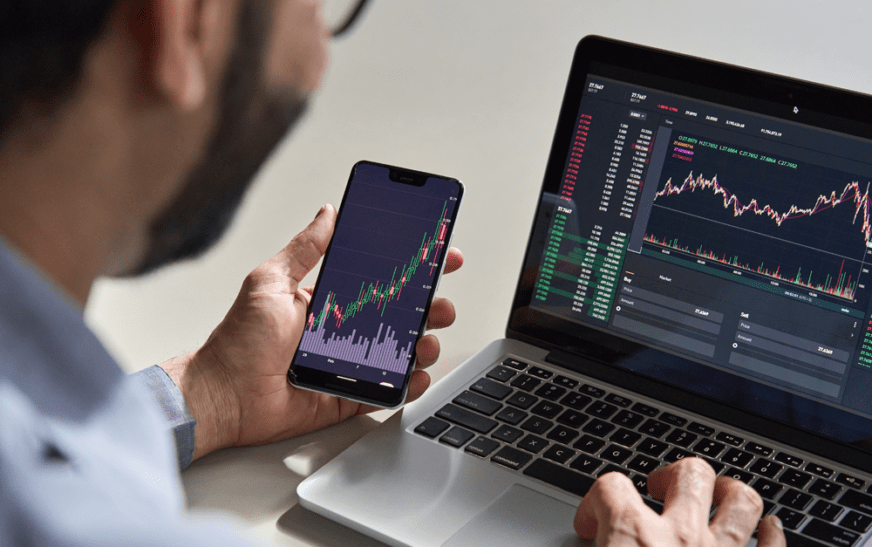Introduction
In the dynamically evolving world of investment, Exchange Traded Funds (ETFs) focusing on emerging markets stand out as beacons of potential for long-term growth. As we look ahead to 2024, this niche in the financial landscape is increasingly attracting investors who seek to diversify their portfolios and tap into the growth prospects of developing economies. Emerging market ETFs offer a unique blend of risk and reward, providing exposure to a diverse array of countries, industries, and companies that are positioned for exponential growth. These investment vehicles are designed for those looking to broaden their investment horizons beyond mature markets and explore the untapped potential of these rising economic stars. Through this article, we’ll navigate the complexities of investing in emerging markets and spotlight the top 5 emerging market ETFs earmarked for promising long-term growth in 2024. This guide aims to equip you with the knowledge to make informed investment decisions and harness the growth potential that emerging markets have to offer.
Overview of Emerging Market ETFs
Emerging market ETFs have become increasingly popular among investors looking to diversify their portfolios and tap into the growth potential outside the mature markets of the United States and Europe. These Exchange Traded Funds (ETFs) pool money from various investors to invest in a basket of stocks, bonds, or other assets from emerging countries, including China, India, Brazil, and Russia, among others.
What are ETFs?
Exchange Traded Funds (ETFs) are investment funds traded on stock exchanges, much like shares. They offer investors a way to buy into a large collection of assets without having to purchase each one individually. ETFs can be designed to track everything from the price of an individual commodity to a large and diverse collection of securities. They provide flexibility, as they can be bought and sold during trading hours at market price, and they often carry lower fees than traditional mutual funds, making them an attractive option for many investors.
Why consider investing in emerging markets?
Investing in emerging markets offers the potential for significant long-term growth. These regions often experience faster economic growth than developed markets due to a combination of factors, including younger populations, increasing industrialization, and the rapid adoption of technology. However, they can also present higher risks due to political instability, currency fluctuations, and less mature financial markets. For investors willing to tolerate these risks, emerging markets can provide a valuable source of diversification and the potential for higher returns compared to developed markets.
Top 5 Emerging Market ETFs for Long-Term Growth in 2024
As we look towards 2024, here are five emerging market ETFs that stand out for their potential to contribute to long-term growth in investors’ portfolios.
ETF 1: Vanguard FTSE Emerging Markets ETF (VWO)
The Vanguard FTSE Emerging Markets ETF (VWO) is one of the largest and most popular ETFs in its category, offering exposure to a broad range of stocks across emerging markets. It includes companies of all sizes, from small cap to large cap, and has a low expense ratio, making it a cost-effective option for investors. VWO is well-regarded for its diversified approach, which helps spread risk across different countries and sectors.
ETF 2: iShares Core MSCI Emerging Markets ETF (IEMG)
The iShares Core MSCI Emerging Markets ETF (IEMG) is designed to track the performance of the MSCI Emerging Markets Index, providing investors with broad exposure to emerging market equities. With thousands of stocks in its portfolio, IEMG offers comprehensive coverage of the emerging markets landscape. It’s particularly noted for its low costs and its focus on large and mid-cap companies, making it an attractive option for investors aiming for long-term growth.
ETF 3: Schwab Emerging Markets Equity ETF (SCHE)
Schwab Emerging Markets Equity ETF (SCHE) offers investors exposure to a wide array of emerging market stocks, focusing on companies that are believed to have long-term growth potential. It has a competitive expense ratio and seeks to track the FTSE Emerging Index. SCHE stands out for its approach to weighting its holdings, aiming to balance between various sectors and countries to mitigate risk.
ETF 4: Invesco QQQ Trust (QQQ)
While not exclusively focused on emerging markets, the Invesco QQQ Trust (QQQ) merits attention for its exposure to some of the largest and most influential tech companies, many of which have significant operations in emerging markets. As tech growth continues to be a major driver of economic expansion in these regions, QQQ can offer indirect exposure to emerging markets through these companies. It’s an option for investors looking to combine the growth potential of tech with the opportunities present in emerging markets.
ETF 5: iShares MSCI Emerging Markets Min Vol Factor ETF (EEMV)
The iShares MSCI Emerging Markets Min Vol Factor ETF (EEMV) takes a different approach, focusing on stocks that have historically demonstrated lower volatility within the emerging markets. This strategy aims to provide a smoother investment experience during market downturns, making EEMV an interesting choice for risk-averse investors interested in the growth potential of emerging markets but concerned about their inherent volatility.
Factors to Consider Before Investing in Emerging Market ETFs
Investing in emerging market ETFs comes with its own set of challenges and opportunities. Understanding the key factors that can influence your investment outcomes is essential for every investor aiming to capitalize on long-term growth chances in these markets.
Risk vs. Reward
Emerging markets are known for their volatility, but with high risk can come high reward. Factors including political instability, currency fluctuations, and differences in regulation can impact the performance of investments in these regions. However, the growth potential in emerging markets is often higher than in more developed economies due to faster economic growth rates, a growing middle class, and increasing domestic consumption. As an investor, assessing your risk tolerance against the growth potential of emerging markets is critical before making investment decisions.
Market Trends in 2024
Staying abreast of market trends is crucial when investing in emerging markets. In 2024, a number of trends are shaping these economies, including advancements in technology, the rise of digital banking, and a stronger focus on sustainability. Countries that are quick to adopt new technologies and address global challenges may offer more attractive investment opportunities. For investors, understanding these trends and their potential impact on different sectors can help identify ETFs that are well-positioned for long-term growth.
Diversification Benefits
One of the primary benefits of investing in emerging market ETFs is diversification. By spreading investments across various countries and sectors within the emerging markets, investors can reduce the overall risk of their portfolios. Emerging market ETFs typically consist of a wide range of stocks, offering exposure to different industries such as technology, consumer goods, and energy. This diversification can help mitigate the impact of negative performance in one region or sector, potentially leading to more stable returns over the long term.
Strategies for Long-Term Growth with ETF Investments
Achieving long-term growth with ETF investments requires a strategic approach. Here are some strategies investors can consider to maximize the potential of their emerging market ETF investments.
Dollar-Cost Averaging
Dollar-cost averaging is an investment strategy where an investor divides up the total amount to be invested across periodic purchases of a target asset in an effort to reduce the impact of volatility on the overall purchase. By consistently investing a fixed amount into an emerging market ETF, regardless of its price, investors can avoid the pitfalls of trying to time the market. This strategy can be particularly beneficial in volatile markets, such as emerging markets, where it can help smooth out the average purchase price over time.
Rebalancing Portfolio
Portfolio rebalancing is the process of bringing the different asset classes within a portfolio back into their proper allocation. Over time, some investments may outperform others, leading to an asset allocation that may not align with an investor’s intended risk profile or investment strategy. By periodically rebalancing their portfolio, investors can sell off portions of overperforming investments and purchase more of underperforming ones to maintain their original asset allocation. This disciplined approach helps investors stay aligned with their long-term investment goals and manage risk more effectively.
Monitoring Performance
Regular monitoring of ETF performance and the broader market conditions is indispensable for investors aiming for long-term growth. This doesn’t mean reacting to every short-term fluctuation, but rather keeping an eye on fundamental changes in market dynamics, geopolitical events, and economic indicators that could affect the long-term prospects of emerging markets. By staying informed, investors can make timely decisions about when to rebalance their portfolio, whether to continue with their current investment strategy, or if adjustments are needed to optimize for long-term growth.
Conclusion
Investing in emerging market ETFs offers a pathway to diversify your portfolio and capitalize on the growth potential outside of the more mature economies. With the top 5 emerging market ETFs for long-term growth in 2024, you’re looking at a broad spectrum of opportunities that span across diverse economies with varying degrees of development. Each ETF has its unique focus, whether it’s on specific countries, sectors, or a broad index of developing markets, allowing investors to align their investment strategy with their financial goals and risk tolerance.
In making an informed investment decision, it’s crucial to consider factors such as the geopolitical risks, economic stability, and market liquidity of the countries included in these ETFs. Additionally, staying informed about global economic trends and how they may affect emerging markets is necessary for anticipating changes in ETF performance.
Remember, while the potential for high returns is significant, emerging market investments come with higher risks compared to developed markets. Therefore, incorporating these ETFs as a part of a well-diversified investment portfolio can potentially mitigate risks while providing growth opportunities.
As we move further into 2024, let us keep an eye on the evolving landscape of emerging markets and continue to make informed decisions to achieve our long-term investment goals.





















